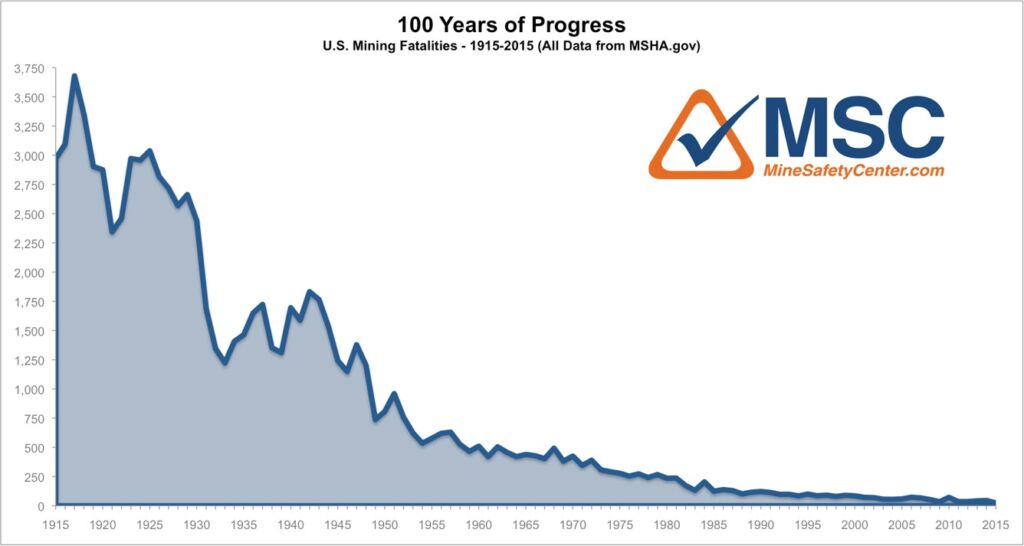What mining looks like in the Democratic Republic of the Congo
A video of African miners narrowly escaping death as a mine shaft collapsed went viral on Twitter over the weekend. The video below shows miners leaping out of a tunnel that collapsed as they dug for a metal called coltan, a dull metallic ore used to make cell phones and laptops.
Similar scenes occur throughout the Democratic Republic of the Congo (DRC), according to Siddharth Kara, the author of Cobalt Red: How the Blood of the Congo Powers Our Lives. Cobalt Red details the working conditions of cobalt miners in the DRC and how cobalt mined by hand by children is laundered through Chinese companies to enter the global supply chain.
Mining has always been a dangerous job, regardless of where it occurs. Historical data from the Mine Safety and Hazards Administration (MSHA) show nearly 3,750 American miners died in 1917. From 1915 to 1930, 2,866 miners lost their lives each year, on average, about eight each day.

However, the United States has made tremendous progress in workplace safety for mines, which is why mining fatalities fell to just 25 in 2015. This progress was achieved through advances in mining technology that allowed fewer miners to mine more material and thanks to oversight from MSHA after the agency was established in 1978.
These protections do not exist in the DRC, which is why the anti-mining groups that push an abstinence-only mining policy in the United States increase the likelihood that our growing demand for metals will be met from areas that do not have strong protections for workers or the environment.
If Minnesotans want to show true global leadership, they should be advocating for the responsible mining of our massive resources of copper, nickel, and cobalt to show the world that it can be done in a way that respects the environment and the people who work in the mines.